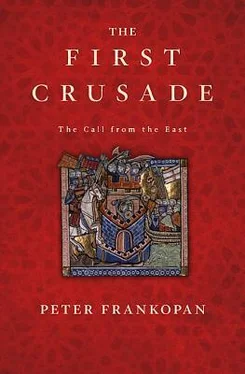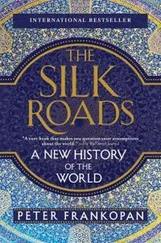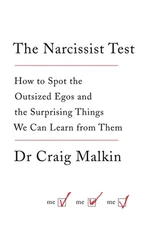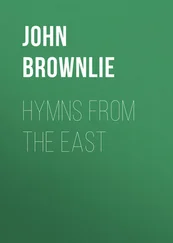Gregory’s attempts at reform by banning the sale of religious offices and asserting that he alone had the right to make appointments set him on a collision course with Henry, who deeply resented the Pope’s interference in the affairs of the German church. By 1076, relations had broken down to such an extent that the Pope excommunicated Henry, declaring that ‘on behalf of Almighty God, the Father, Son and the Holy Spirit, through your power and authority, I deny to King Henry, son of the emperor Henry, who has risen up with unheard of pride against your church, the government of the entire kingdom of the Germans and of Italy, and I absolve all Christians from the bond of any oath that they have taken, or shall take, to him; and I forbid anyone to serve him as king’. 4
Not surprisingly, this inflamed tensions, with Henry’s supporters declaring that the Pope was a criminal and bishops loyal to the German sovereign passing the sentence of excommunication on the pontiff himself. 5Although the two men were briefly reconciled in the later 1070s, their relationship broke down once and for all after the Pope was persuaded to give his backing to powerful enemies of the emperor in Germany, who were seeking to depose him. After Gregory endorsed the claims of one of these rivals to the throne, praising his humility, obedience and love of truth in contrast to Henry’s pride, disobedience and deceit, the emperor took drastic steps. 6
The bishops of Germany and northern Italy were summoned to a church council at Brixen in June 1080. There it was proposed that Gregory should be expelled from Rome by force and replaced by an ‘orthodox’ pope. Wibert, archbishop of Ravenna, was nominated as pope elect, with his coronation to take place in Rome the following spring. 7After being delayed by uprisings in Germany, Henry IV finally marched into Italy, advancing on Rome and taking the city in 1084. Wibert was immediately crowned as Pope Clement III in the basilica of St Peter. A week later, Henry himself was crowned as emperor of Rome. ‘We have been ordained by Pope Clement’, he wrote, ‘and have been consecrated emperor by consent of all the Romans on the Holy Day of Easter with the exultation of the whole Roman people.’ 8
The establishment of Clement as a rival pope, claiming to be the true heir to the throne of St Peter and supported by a swathe of senior clergy, threatened to split the Roman church in two. Although Gregory himself took refuge in the Lateran and eventually escaped from Rome to Salerno, where he died in exile in 1085, uncertainty and confusion continued to cloud the papacy. It took nearly a year for a successor to be named to take Gregory VII’s place, and even then the candidate chosen as pope, Victor III, had to be installed more or less by force. His death after barely eighteen months in office led to a new election and created further upheaval. In March 1088, Odo, cardinal bishop of Ostia, was named pope, taking the name Urban II; yet he was not recognised in lands subject to Henry IV in Germany or northern Italy. The church was in disarray.
The schism in the Western Church showed little sign of healing in the years that followed. In the decade before the Council of Clermont in 1095, it was Clement III – and not Urban II – who was in the stronger position. The latter, after all, was rarely even able to get inside the walls of Rome in the first years of his pontificate: even his election had taken place in Terracina, well away from the Eternal City, which was still firmly held by forces loyal to the emperor. Although he briefly managed to enter Rome in 1089, celebrating with a procession, a coronation Mass and proclaiming an encyclical, he quickly withdrew again, not daring to risk staying in the city for any length of time. 9When he returned at Christmas in 1091 and 1092, he was forced to camp outside the city walls, unable to undertake the most basic duties of the Pope, including saying Mass in St Peter’s. 10
The idea that Urban might be ble to move and inspire the Christian knights of Europe to rise up, bear arms and march on Jerusalem would have been laughable at the time of his election. Although the Pope followed developments in Spain closely, where gains were being made at the expense of the Muslims, he could do little more than send enthusiastic letters of support and encouragement. 11But given Urban’s predicament at home, his concern for the fate of the faithful in the east, while perhaps heartfelt, would have carried little weight and no influence in a world where he struggled to rally supporters even in Rome, let alone elsewhere in Europe.
In contrast, Clement III was relentlessly reinforcing his position as the true head of the Catholic Church. In the late 1080s, he sent a spate of letters to Lanfranc, archbishop of Canterbury, inviting him to Rome, asking for Peter’s pence to be sent to him, and offering to intervene in disputes in England. He also urged the king of England and the bishops to provide help to the mother church. 12Clement communicated with the Serbs, confirming clerical appointments and sending a special ecclesiastical vestment, a pallium, to the archbishop of Antivari. 13He made contact with the head of the church in Kiev, the capital of the medieval Russian state, sending him messages of goodwill. 14He was behaving exactly as the Pope should: officiously contacting, advising and supporting leading figures in the Christian world. It was Clement III, and not Urban, who looked likely to deliver the sort of speech and produce the sort of reaction that might unite the church in the mid-1090s.
Where Urban II did have an advantage over his rival was in his relationship with the Eastern Church – though this itself was not without difficulty. Originally, Rome and Constantinople had been two of the five primary sees of Christendom, along with Antioch, Alexandria and Jerusalem. The fall of the last three to the Islamic conquests of the seventh century elevated the status of the remaining two cities to the point of endemic rivalry. Disputes about their relative importance, as well as about matters of doctrine and practice, flared up on a regular basis, and furious exchanges between Pope Nicholas I and the head of the church in Constantinople, the patriarch Photios, had brought relations to a particular low point in the ninth century.
Normally, though, time soothed tensions and these quarrels were broken up by long periods of co-operation. A tenth-century Byzantine manual reveals how letters sent by the emperor in Constantinople to the Pope should be addressed, following a set formula: ‘In the name of the Father and of the Son and of the Holy Spirit, our one and only God. [name left blank] and [name left blank], emperors of the Romans, faithful to God, to [name left blank] most holy Pope of Rome and our spiritual father’. Likewise, respectful terms with which to address the emperor were set out for ambassadors from Rome. 15These formulas suggest that co-operation between east and west was the norm rather than the exception.
In the middle of the eleventh century, however, relations between Rome and Constantinople emphatically broke down. A mission sent by Pope Leo IX in 1054 to explore common interests in Italy, where Byzantium controlled the regions of Apulia and Calabria, went spectacularly awry. Negotiations started off on the wrong foot, with discussion turning not to a possible alliance but to differences between the Latin and Greek rites in celebrating the Eucharist. As the excitable source material shows, it was of real significance to resolve whether leavened or unleavened bread should be used for the body of Christ. Most important of all, however, was the addition of the so-called filioque clause to the Creed, by which it was claimed that the Holy Spirit proceeded not just from the Father, but also from the Son. Initially proposed at a church council in Spain in the sixth century, which was, significantly, not attended by many leading clerics, its use had been initially condemned even by the papacy. However, the controversial filioque clause became increasingly prevalent in a world where it was not always easy to regulate practices. By the early eleventh century it was used so widely that it was formally accepted as a standard part of the Creed. The addition of the clause by Rome was furiously decried in the eastern Mediterranean, above all in Constantinople.
Читать дальше











